Lipsmacking and easy-to-make cilantro shallots chutney recipe aka kothamalli vengaya chutney in Tamil, a perfect side for idli, dosa, and rice! Check out how to make this chutney with detailed step-wise pictures.
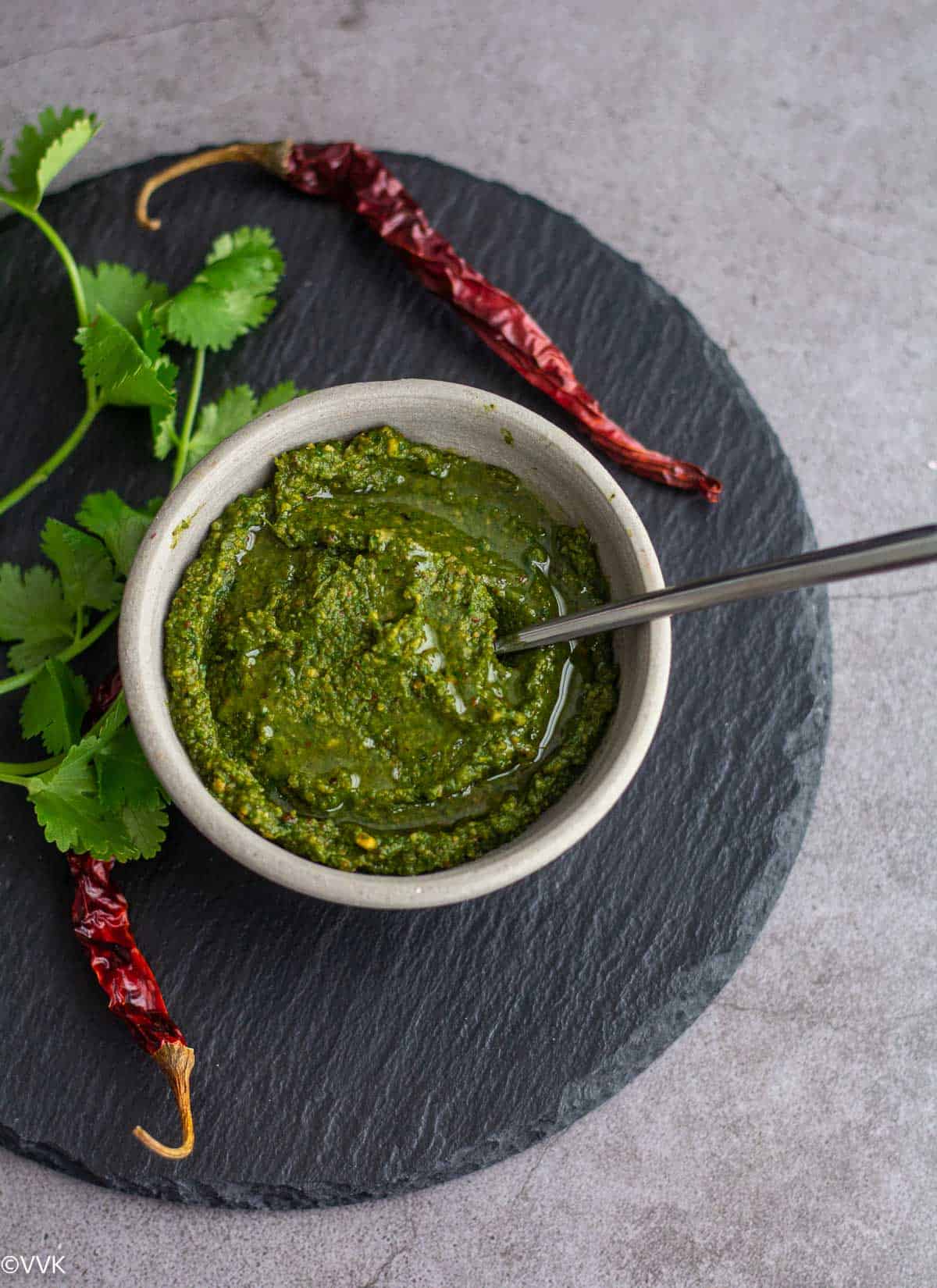
Restaurants typically serve idli and dosa with sambar and chutneys like coconut chutney, onion-tomato chutney, mint, or cilantro chutney, but that’s not the case at home. Apart from these traditional chutneys, we also make several other chutneys with lentils, vegetables, and other gravies that are not sambar. :-) This cilantro shallots chutney is one such recipe.
Jump to:
Kothamalli is the Tamil word for cilantro or coriander leaves, and vengayam means onion. I have used shallots or chinna(small) vengayam for this chutney. Hence the three names – kothamalli vengaya chutney or cilantro shallots chutney, coriander onion chutney. Call it however you prefer and now let’s get straight into the ingredients, procedure, and different ways to use it.
Ingredients required
Cilantro | fresh coriander leaves are the key ingredient in this chutney. I went with a small bunch, approx 35 grams. You can include the cilantro stems, too, so don’t discard them.
Shallots add a ton of flavor to this chutney. Instead of shallots, you can use regular onions instead of shallots, too, but I highly recommend shallots.
We use dried red chili and fresh green chili to spice up the chutney. You can use either one and also adjust the measure to taste.
Urad dal adds texture and slight thickness to this chutney. I went with one tbsp of urad dal; you can add up to 2 tbsp for a thicker version.
We add some tamarind paste for a tad bit of tangy flavor, but that’s optional. I have tried this chutney without tamarind too.
Apart from these ingredients, we also need oil to roast the ingredients, asafoetida, and salt. I usually skip the tempering for this chutney and add a dollop of gingelly oil on top, but you can temper ½ to 1 tsp of mustard seeds in gingelly oil and add that.
How to make kothamalli chutney
- Heat a pan or kadai and add ½ tsp of oil. When the oil is hot, add the urad dal, dried red chili, asafoetida, and roast until the urad dal turns a deep golden color over medium-low heat. Transfer it to the mixer jar and set it aside.
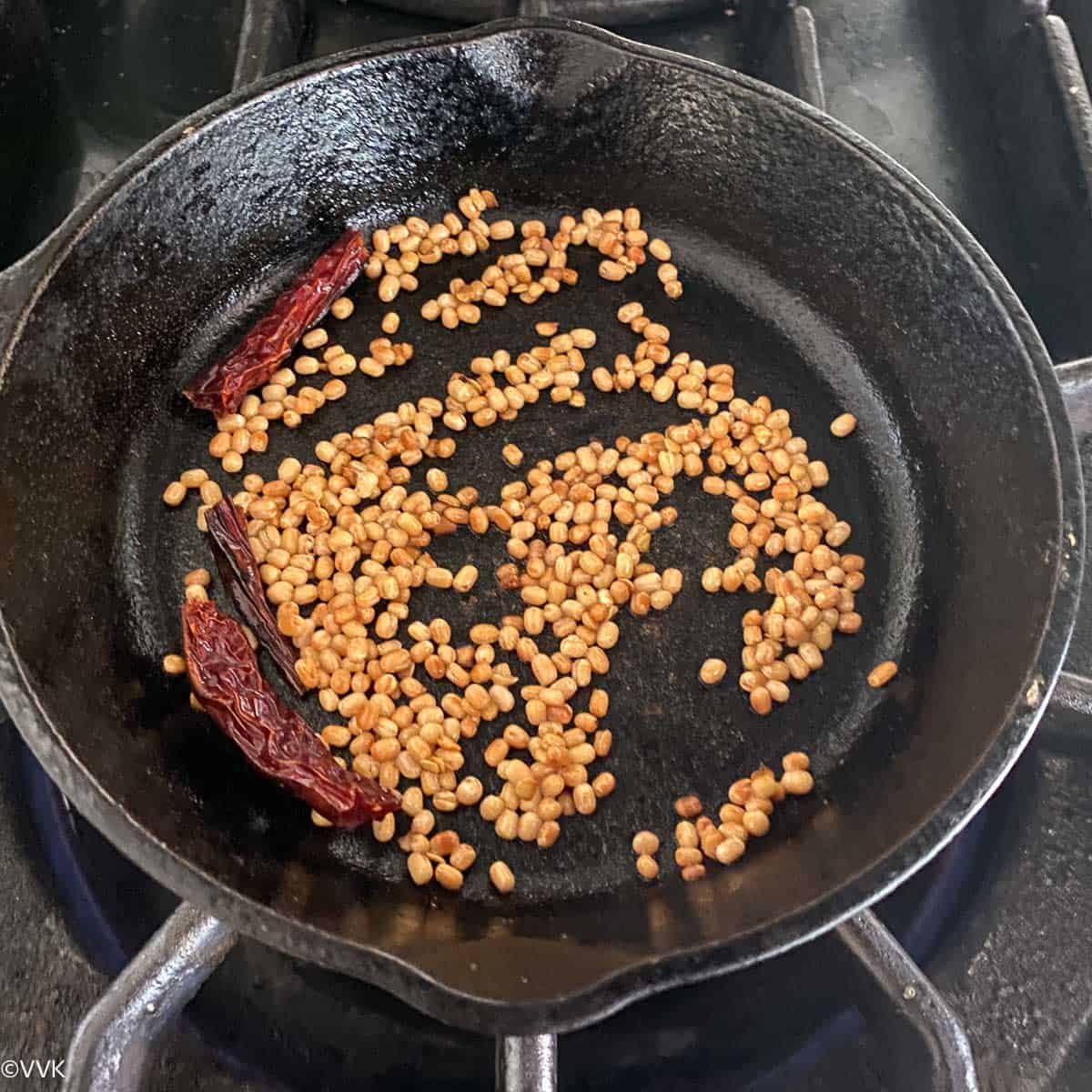
- Add the remaining ½ tsp oil to the same pan and add the shallots and green chilies.
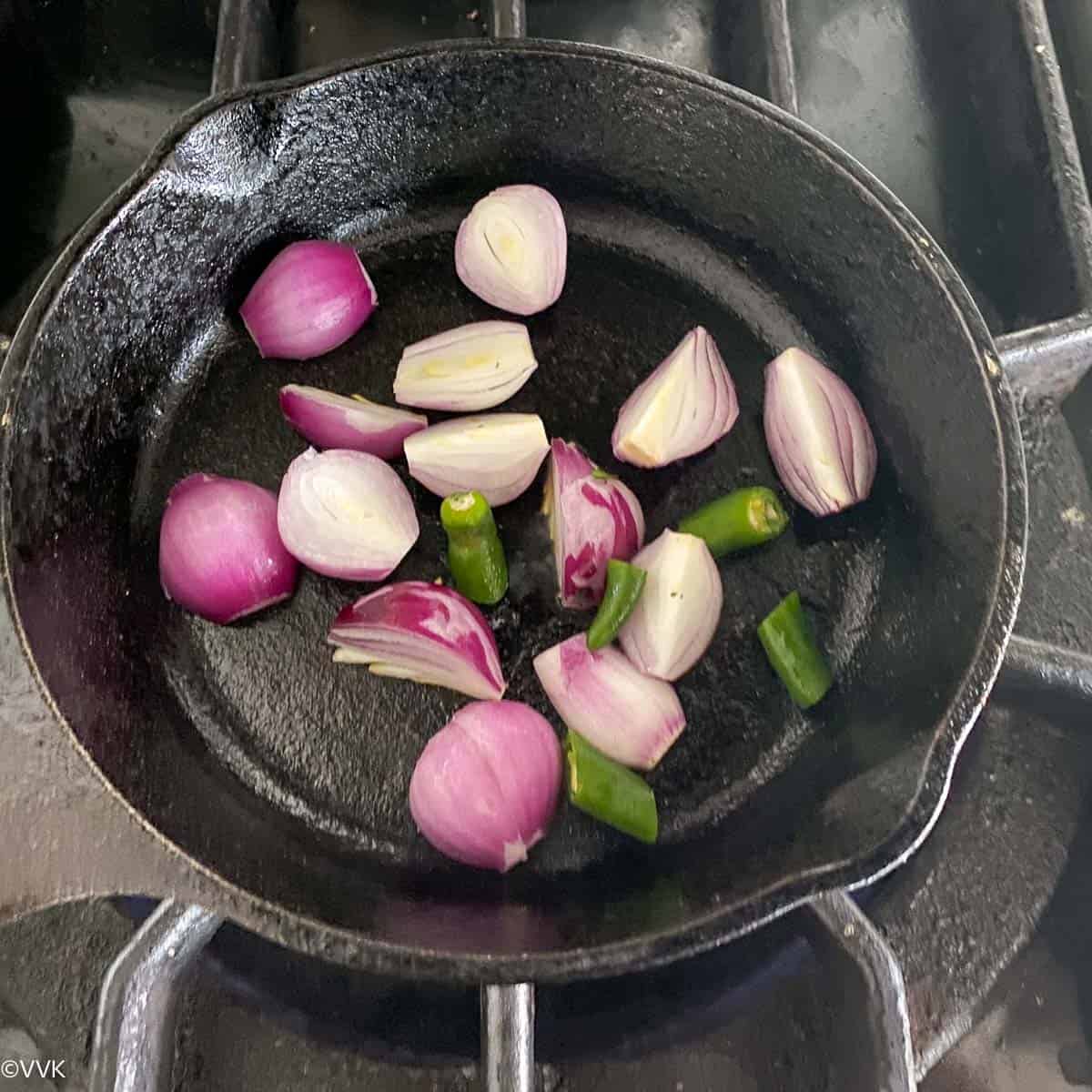
- Saute until the shallots are soft and blistered like below.
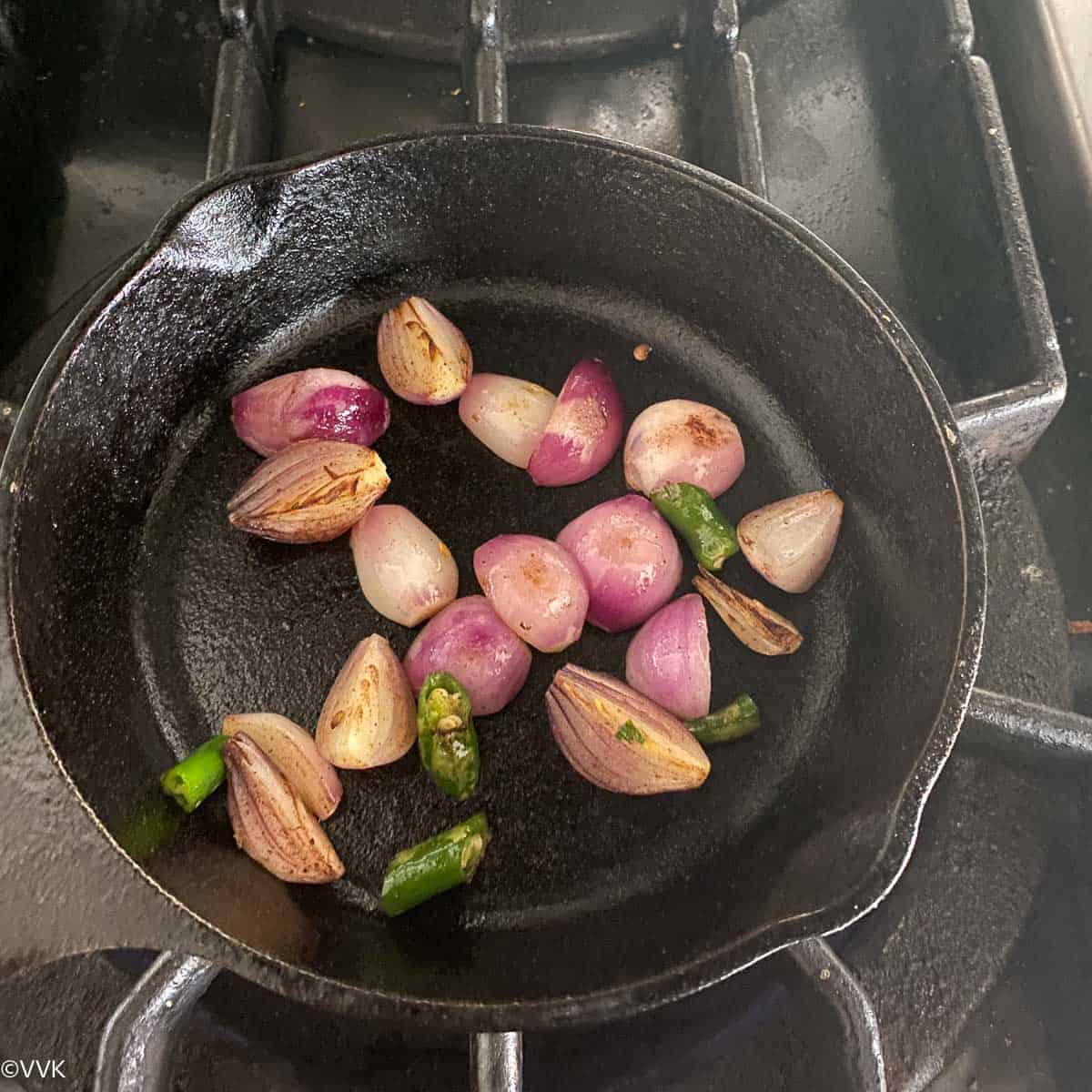
- Reduce the heat to low; add the roughly chopped cilantro and mix well. Once it starts to wilt, turn off the heat and let it wilt further in the residual heat. Transfer this to the mixer jar.
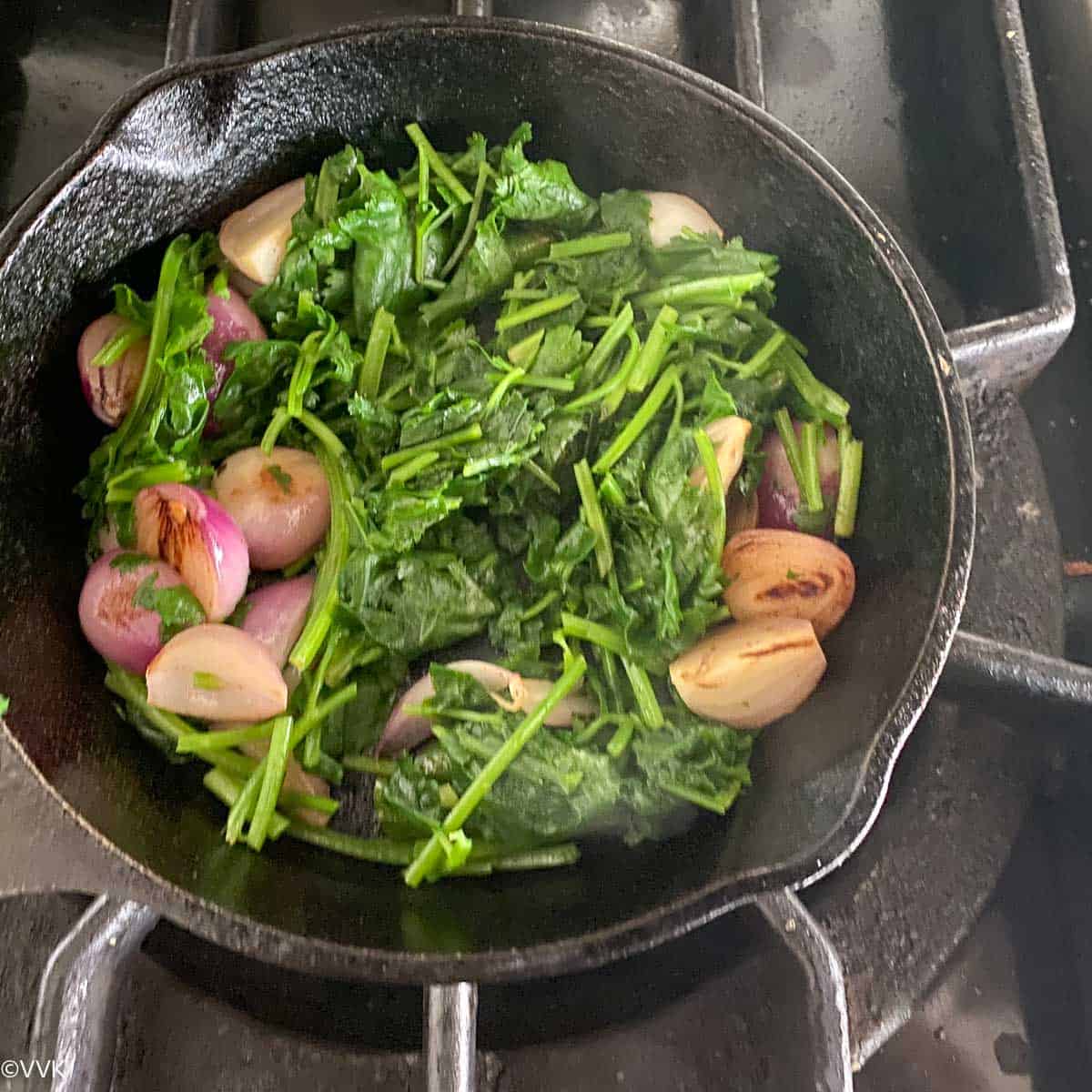
- Add the tamarind paste and salt.
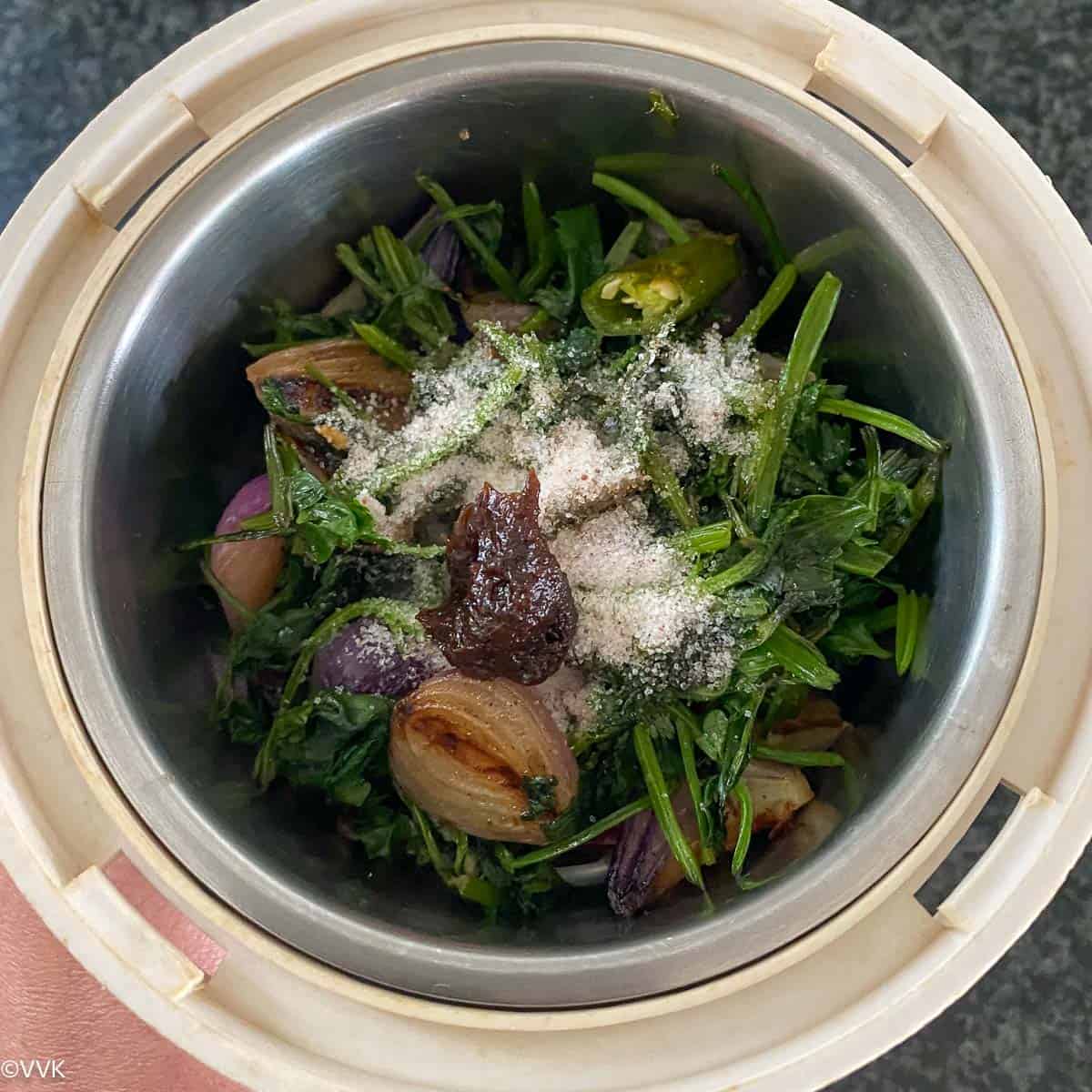
- Without adding water, grind the ingredients smooth, and that’s it; the cilantro shallots chutney is ready.
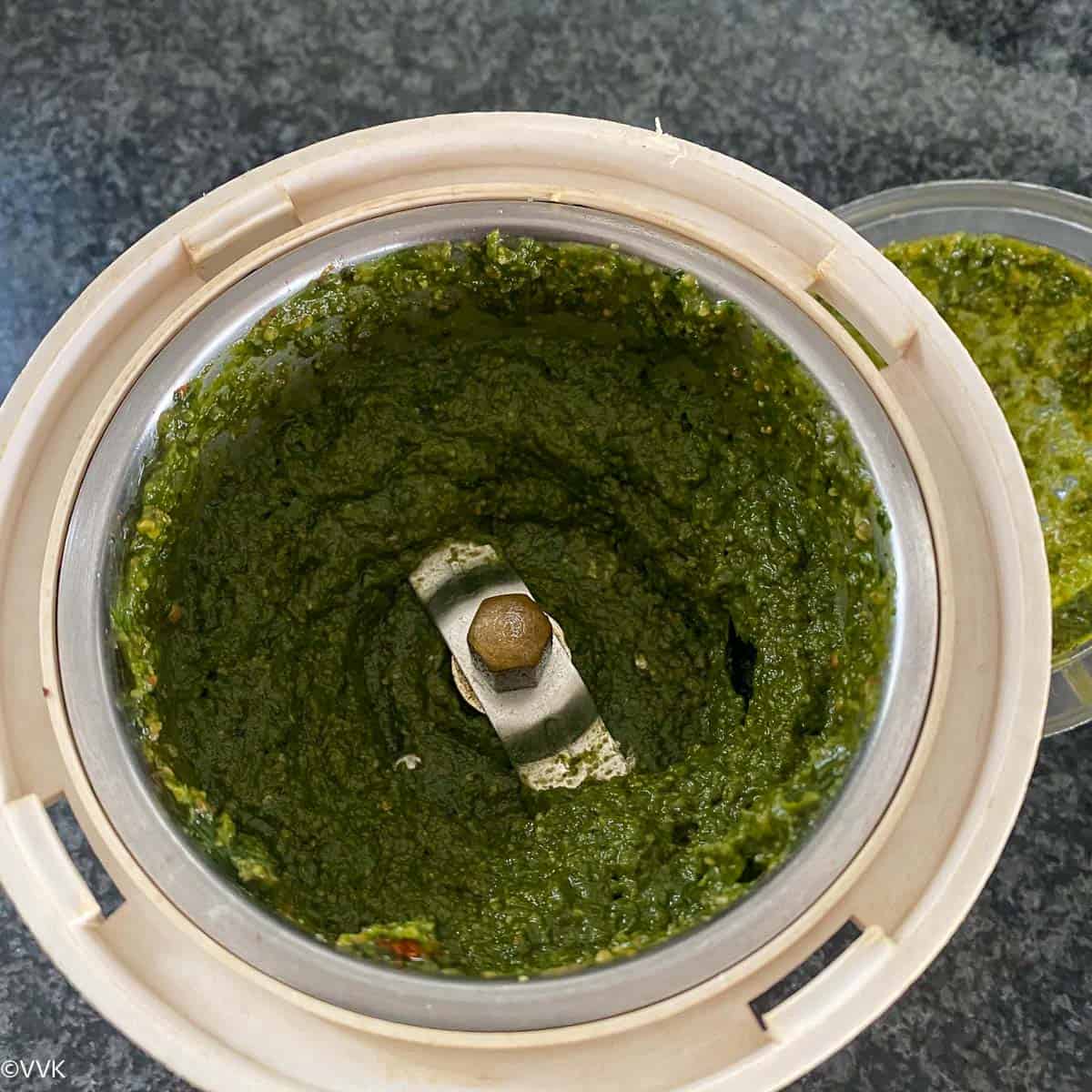
VVK tips and recipe notes
- You don’t need any water to grind this chutney. And if required, do not add more than 2 tbsps of water. This is not a runny or watery chutney, and grinding it without water increases the shelf life.
- Be cautious while adding salt. Start with a minimal amount, and if needed, add more.
- I highly recommend shallots, but opt for red onions if you don’t have them. Also, do not discard the cilantro stems. You can add one small garlic clove too.
- I skipped tempering and added a tsp of Indian sesame oil/gingelly oil on top. It’s optional, though. And you can add ½ tsp of mustard seeds in one tsp of gingelly oil and add that to the chutney.
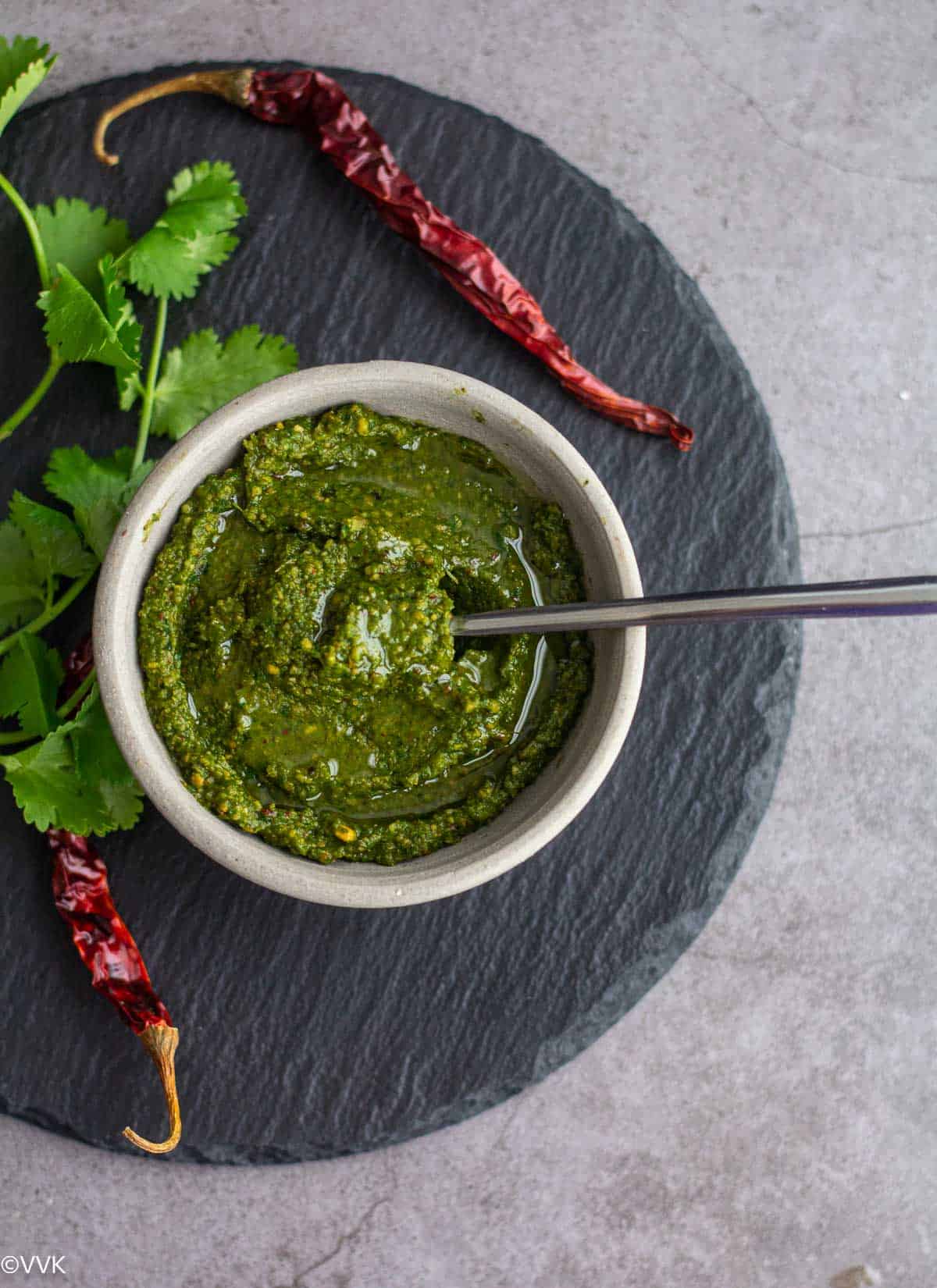
Dietary specifications and storing suggestions
This coriander chutney is vegan and nut-free naturally. Use gluten-free asafoetida or skip it for a gluten-free version.
Store this chutney in an air-tight container, and it stays good for 3 to 4 days when refrigerated. You can make this a part of your weekend meal prep and use it in multiple ways.
Different ways to serve this chutney
There is no doubt that this chutney tastes delicious with some soft idli and dosas. We enjoyed it with the ghavan dosa. But you can also serve/use this in different ways.
- As the chutney is thick, it is more like thogayal/thuvaiyal, and you can also mix this with plain steamed rice or serve it as a side for rasam rice or yogurt rice.
- Use it as a sandwich spread. Smear this chutney on the bread and top it with cucumbers, onion, and paneer. Sprinkle some chaat masala and grill it for a delicious sandwich.
- It might sound odd, but trust me, you can add this to pasta. You can make cold pasta salads and use this chutney like a pesto.
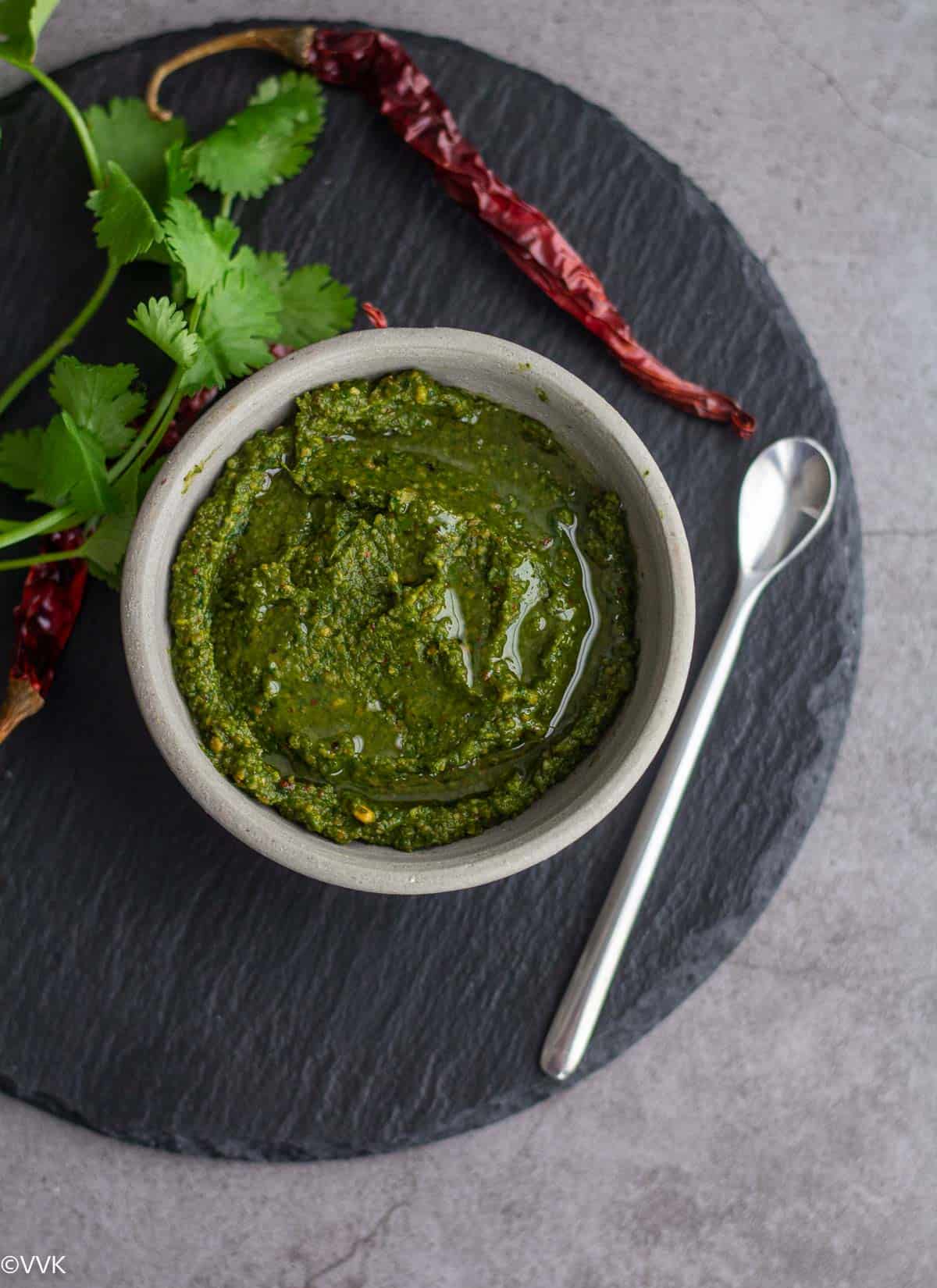
More cilantro recipes
Don’t forget to check my white chutney aka coconut chutney recipe and red chutney aka onion tomato chutney recipe which are typically served in restaurants.
PS: If you try this kothamalli chutney, please don’t forget to comment and rate this recipe. If you have any questions, please leave a comment, and I will get to it ASAP. Follow me on my Pinterest for more healthy and delicious ideas! Follow me on Instagram or join my Facebook Group for more recipe updates! You can also sign-up for my newsletter for weekly updates.
📖 Recipe
Kothamalli Vengaya Chutney | Cilantro Shallots Chutney | Coriander Onion Chutney
Equipment
- Mixer jar or coffee grinder
Ingredients
Measurement Details: 1 cup = 240ml; 1 tbsp = 15ml; 1 tsp = 5ml;
Instructions
- Heat a pan or kadai and add ½ tsp of oil. When the oil is hot, add the urad dal, dried red chili, asafoetida, and roast until the urad dal turns a deep golden color over medium-low heat. Transfer it to the mixer jar and set it aside.
- Add the remaining ½ tsp oil to the same pan and add the shallots and green chilies.
- Saute until the shallots are soft and blistered like below.
- Reduce the heat to low; add the roughly chopped cilantro and mix well. Once it starts to wilt, turn off the heat and let it wilt further in the residual heat. Transfer this to the mixer jar.
- Add the tamarind paste and salt.
- Without adding water, grind the ingredients smooth, and that’s it; the cilantro shallots chutney is ready.
Notes
- You don’t need any water to grind this chutney. And if required, do not add more than 2 tbsps of water. This is not a runny or watery chutney, and grinding it without water increases the shelf life.
- Be cautious while adding salt. Start with a minimal amount, and if needed, add more.
- I highly recommend shallots, but opt for red onions if you don’t have them. Also, do not discard the cilantro stems. You can add one small garlic clove too.
- I skipped tempering and added a tsp of Indian sesame oil/gingelly oil on top. It’s optional, though. And you can add ½ tsp of mustard seeds in one tsp of gingelly oil and add that to the chutney.
Nutrition
I am not a nutritionist. The nutritional information is provided as a courtesy and is an estimate only. It varies depending upon the product types or brands.
Update notes: Earlier posted in 2013, now updated the recipe with recipe card and step-wise pictures.


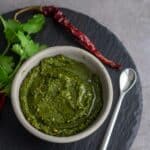
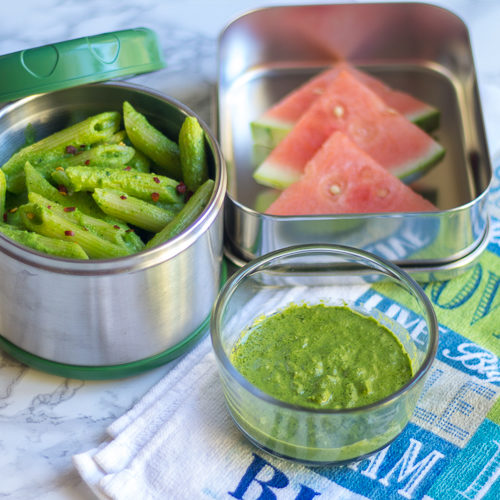
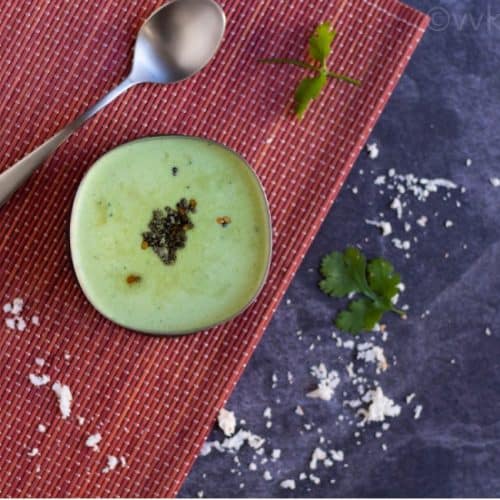
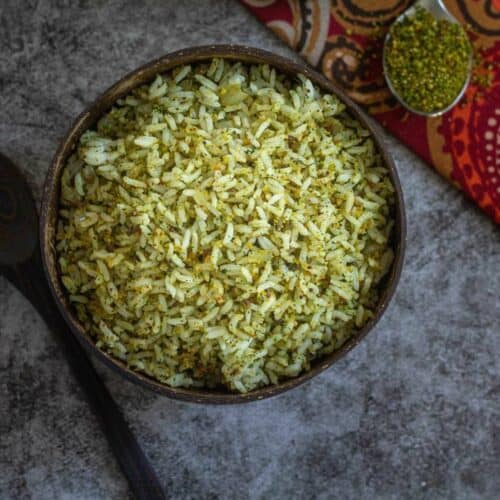
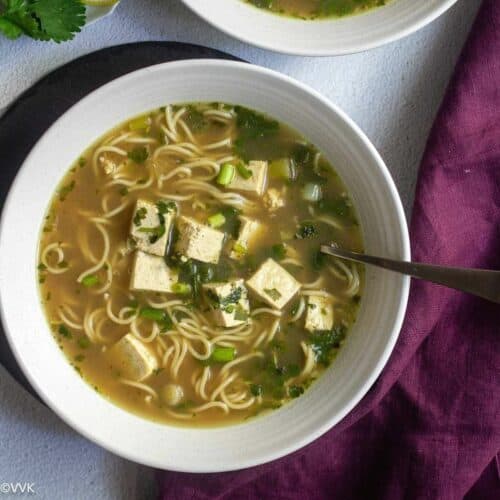
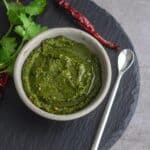

Leave a Reply